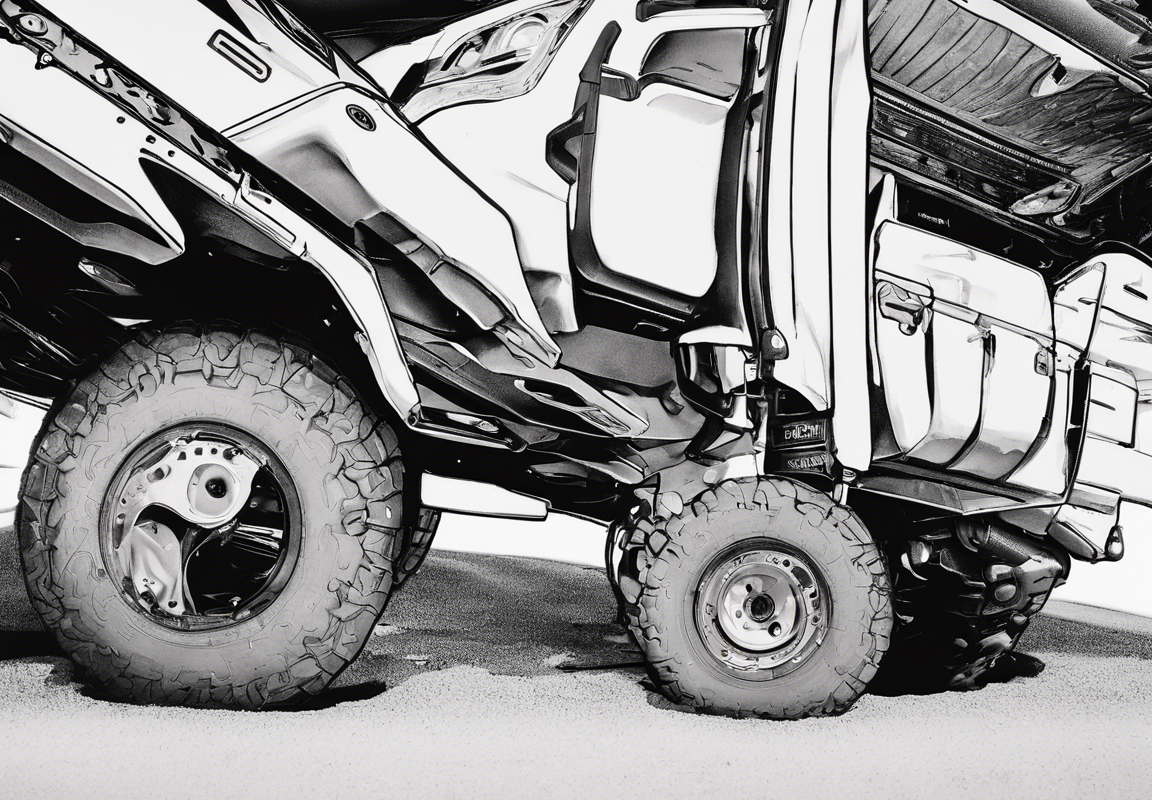Off-roading is an exhilarating outdoor activity that allows enthusiasts to explore rough terrains and push their vehicle’s limits. However, ground clearance is a critical factor that can make or break your off-road adventure. A vehicle’s ground clearance refers to the distance between the lowest point of the vehicle (typically the differential or skid plate) and the ground below. Insufficient ground clearance can lead to getting stuck on obstacles such as rocks, tree roots, or uneven terrain, compromising both safety and performance.
For off-roading enthusiasts looking to enhance their vehicle’s ground clearance for more adventurous expeditions, there are several strategies and modifications to consider. This comprehensive guide explores various methods to improve ground clearance, from simple adjustments to more advanced upgrades, helping you tackle challenging trails with confidence.
Why Ground Clearance Matters:
Before diving into ways to improve ground clearance, it’s essential to understand why this aspect is so crucial for off-roading adventures:
-
Obstacle Clearance: A higher ground clearance allows your vehicle to navigate over obstacles without getting stuck or causing damage to the undercarriage.
-
Approach and Departure Angles: Adequate ground clearance improves your vehicle’s approach and departure angles, enabling smoother transitions when climbing inclines or descending steep slopes.
-
Reduced Risk of Damage: With more clearance, there’s less risk of scraping the undercarriage on rocks, logs, or other obstacles, which can cause costly damage.
-
Improved Off-Road Capabilities: Enhanced ground clearance enhances your vehicle’s off-road capabilities, allowing you to traverse challenging terrain with greater ease and control.
Methods to Improve Ground Clearance:
1. Upgraded Suspension Systems:
Installing a lift kit or upgrading to a suspension system designed for off-roading can significantly increase ground clearance. Lift kits come in various heights, typically ranging from 1-6 inches or more, allowing you to customize the level of lift based on your needs. Upgraded shocks and springs can also improve suspension articulation, providing better wheel travel over rough terrain.
2. Bigger Tires:
Swapping out stock tires for larger ones with a higher sidewall ratio can instantly boost ground clearance. Larger tires not only raise the vehicle higher off the ground but also provide better traction and improved off-road performance. However, it’s crucial to ensure that the new tires fit properly without rubbing against the fenders or suspension components.
3. Skid Plates and Underbody Protection:
Installing skid plates or underbody armor can help shield vulnerable components such as the engine, transmission, and fuel tank from damage when navigating rocky terrain. Skid plates are usually made of durable materials like steel or aluminum and are designed to absorb impacts without compromising ground clearance.
4. Trimming or Removing Excess Body Panels:
In some cases, trimming or removing non-essential body panels or parts that hang below the chassis can provide a slight increase in ground clearance. However, it’s essential to assess the potential impact on vehicle stability and aerodynamics before making any modifications.
5. Air Suspension Systems:
Air suspension systems allow you to adjust your vehicle’s ride height on the fly, raising it for off-road excursions and lowering it for on-road driving. While more expensive than traditional suspension upgrades, air suspension systems offer unparalleled flexibility and adaptability for varying terrain conditions.
6. Portal Axles:
Portal axles are advanced drivetrain components that provide extra ground clearance by offsetting the axle centerline from the wheel centerline. This design results in higher clearance under the differential housing, allowing for larger tires and increased off-road capability. Portal axle conversions are a significant investment but offer unmatched performance benefits for serious off-roaders.
7. Body Lift Kits:
Unlike suspension lift kits, body lift kits raise the vehicle’s body off the frame without altering the suspension geometry. While body lift kits increase ground clearance, they do not improve off-road performance as effectively as suspension upgrades. It’s essential to consider the trade-offs between ground clearance and suspension articulation before choosing a lift kit type.
Frequently Asked Questions (FAQs):
1. How much ground clearance do I need for off-roading?
The ideal ground clearance for off-roading varies depending on the terrain you plan to tackle. In general, a minimum of 8-10 inches of ground clearance is recommended for moderate off-road trails, while more challenging terrain may require 12 inches or more.
2. Can I increase ground clearance without lifting my vehicle?
Yes, you can improve ground clearance by optimizing tire size, installing skid plates, and removing unnecessary components. While these methods may not provide as significant a lift as suspension upgrades, they can still enhance off-road performance.
3. Will increasing ground clearance affect my vehicle’s center of gravity?
Raising your vehicle’s ground clearance will raise its center of gravity, potentially affecting stability. It’s essential to consider this trade-off and drive cautiously when navigating off-road obstacles to prevent rollovers or loss of control.
4. Are there any legal restrictions on how high I can lift my vehicle for off-roading?
Laws regarding vehicle lift height vary by location, so it’s crucial to check local regulations before making any modifications. Exceeding legal height limits can result in fines or citations, so ensure compliance with relevant laws.
5. Do I need to recalibrate my vehicle’s suspension after lifting it?
Depending on the type of lift kit installed, recalibration of the suspension may be necessary to maintain proper alignment and performance. Consult with a professional mechanic or off-road specialist to ensure that your vehicle’s suspension functions correctly after lifting.
Conclusion:
Improving ground clearance is a fundamental aspect of enhancing your vehicle’s off-road capabilities and ensuring a safe and enjoyable off-roading experience. By implementing the strategies outlined in this guide, from suspension upgrades to tire enhancements, you can elevate your vehicle’s performance on challenging trails and conquer obstacles with confidence. Remember to consider the terrain you’ll be tackling and your vehicle’s specific requirements when selecting the most suitable ground clearance enhancements. With the right modifications and a spirit of adventure, you can embark on unforgettable off-road journeys and push the boundaries of exploration.






